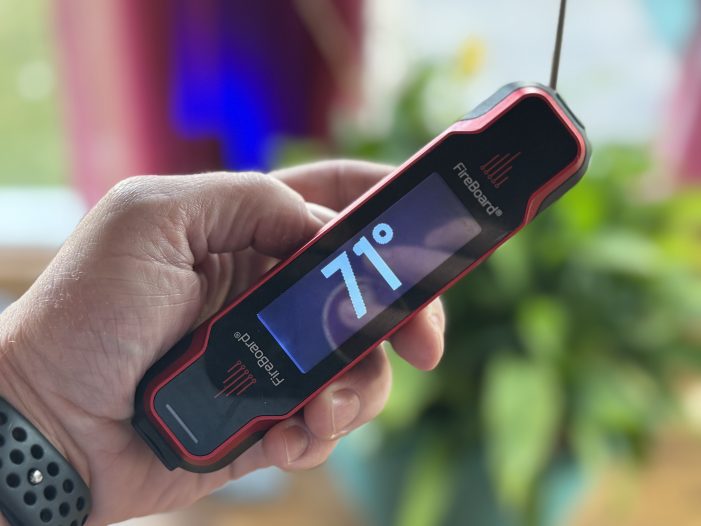In the world of barbecue, mastering temperature control is the cornerstone of achieving smoked perfection. Whether you’re a seasoned pitmaster or a weekend warrior, understanding how to regulate and monitor temperatures can mean the difference between tender, juicy meat and a disappointing outcome. Today, I delve into the importance of temperature control in smoking, explores tools and methods to maintain it, highlights leading brands offering temperature monitoring devices, and provides a guide to cooking times and ideal temperatures for various meats.
Why Temperature Control Matters in Smoking
Smoking is a low-and-slow cooking technique that relies on consistent temperatures to transform tough cuts of meat into mouthwatering masterpieces. The magic happens when meat is exposed to steady heat and smoke, breaking down connective tissues and infusing it with rich, smoky flavors.
Here’s why temperature control is essential:
- Tenderness and Flavor Development: Maintaining consistent heat ensures collagen and fat break down properly, creating juicy, tender meat with a melt-in-your-mouth texture.
- Food Safety: Undercooked meat can harbor harmful bacteria, while overcooking can dry it out. Precise temperature control ensures meats are cooked to safe internal temperatures.
- Efficient Cooking: Fluctuations in temperature can extend cooking times or lead to uneven results. Consistent control reduces guesswork and delivers reliable outcomes.
Methods for Monitoring and Controlling Smoker Temperatures
There are multiple ways to monitor and regulate temperatures on a smoker, ranging from traditional methods to high-tech solutions. Here’s an overview:
1. Built-in Thermometers
Most smokers come equipped with a built-in thermometer, usually mounted on the lid. While convenient, these thermometers often measure air temperature rather than the grill grate’s surface, leading to potential inaccuracies. Always cross-check with a reliable probe thermometer for precision.
2. Digital Thermometers
Digital thermometers are a staple for modern pitmasters. They provide accurate readings and often include features like:
- Dual Probes: Monitor both smoker and meat temperatures simultaneously.
- High/Low Alarms: Alert you if temperatures deviate from the desired range.
3. Wi-Fi and Bluetooth Thermometers
For tech-savvy grillers, Wi-Fi and Bluetooth thermometers offer real-time monitoring through smartphone apps. Features include:
- Remote monitoring for convenience.
- Temperature graphs for tracking cooking trends.
- Customizable alerts for specific cooking milestones.
4. Automatic Temperature Controllers
These devices automate the smoking process, maintaining consistent heat by adjusting airflow in real-time. They connect to your smoker’s vents and include features like:
- Fans to control oxygen flow.
- Precise temperature regulation based on set parameters.
- Integration with apps for remote operation.
Leading Brands in Temperature Monitoring and Control
Several brands specialize in devices designed to elevate your smoking game. Here are a few standout names:
1. FireBoard
FireBoard’s Wi-Fi-enabled thermometers, such as the FireBoard 2, are ideal for pitmasters seeking advanced features like multi-probe monitoring and cloud data logging. These are our choice for best in breed.
2. ThermoWorks
Known for their industry-leading Thermapen ONE, ThermoWorks also offers the Signals thermometer, which features four channels and cloud connectivity for precise monitoring. Can’t go wrong with these, we have several on our trailers.
3. BBQ Guru
A pioneer in automatic temperature control, BBQ Guru offers products like the DynaQ and UltraQ that combine fan-driven technology with app-based control for unparalleled precision.
4. Weber Connect
For those who love convenience, Weber Connect offers a simple, app-driven thermometer system that guides users through the smoking process with step-by-step instructions.
Cooking Times and Ideal Temperatures for Smoking Meat
Achieving perfectly smoked meat requires not only controlling smoker temperatures but also understanding the internal temperatures and cooking times for various cuts. Remember, temperatures are just a gauge for doneness. Use ‘feel’ as well, to ensure the meat is tender and done to your liking. You should feel very little resistance when probing a brisket or rack of ribs, with a thermometer.
Here’s a handy guide, to get you close (the rest is on you!):
1. Beef Brisket
- Smoker Temp: 225–275°F
- Internal Temp: 195–205°F (for Choice/Prime Beef) or 205°F+ (for Waygu Beef)
- Cooking Time: 1.5–2 hours per pound
2. Pork Shoulder (Pork Butt)
- Smoker Temp: 225–250°F
- Internal Temp: 195–205°F
- Cooking Time: 1.5–2 hours per pound
3. Ribs (Pork or Beef)
- Smoker Temp: 225–250°F
- Internal Temp: 190–205°F
- Cooking Time: 5–6 hours for baby back ribs; 6–7 hours for spare ribs
4. Chicken
- Smoker Temp: 225–275°F
- Internal Temp: 160°F (breast), 180°F (thigh)
- Cooking Time: 3–5 hours for a whole chicken, depending on size
5. Turkey
- Smoker Temp: 225–275°F
- Internal Temp: 160°F (breast), 180°F (thigh)
- Cooking Time: 30–40 minutes per pound
6. Salmon
- Smoker Temp: 180–225°F
- Internal Temp: 135°F
- Cooking Time: 30–45 minutes
Tips for Temperature Control Success
- Preheat Your Smoker: Ensure your smoker reaches the desired temperature before adding meat.
- Maintain Consistent Fuel Levels: Whether using charcoal, pellets, or wood, keep your fuel steady to avoid temperature swings.
- Use Water Pans: Adding a water pan helps stabilize temperatures and adds moisture to the cooking environment.
- Avoid Peeking: Opening the smoker frequently lets out heat and smoke, causing temperature fluctuations.
What Does It All Mean?
Mastering temperature control is the key to unlocking the full potential of your smoker. With the right tools, knowledge, and techniques, you can achieve consistently stellar results that will make you the hero of every barbecue gathering. Invest in quality thermometers or controllers, understand the cooking needs of each type of meat, and stay patient—the rewards are well worth the effort. Whether you’re smoking brisket, ribs, or salmon, a commitment to temperature precision is your ticket to BBQ greatness.
The next time you fire up your smoker, remember: Consistent temperature isn’t just a detail—it’s the foundation of a barbecue revolution.
For more on the differences between smokers, go here!
For tips and tricks for beginners, start here!
Author, Matt Frampton, owner of Urban Slicer Pizza Worx and BBQRevolution.com


You must be logged in to post a comment Login